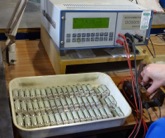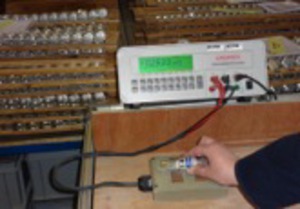

|
Edward Lowton
Editor |


|
| Home> | Plant, Process & Control | >Sensors and instrumentation | >Checks the fuse |
Checks the fuse
12 May 2015
Lawson Fuses is using a pair of D05000s advanced microhmmeters from Seaward to achieve highly accurate low resistance measurement during the manufacture of low voltage and semi-conductor protection fuse-links at its Ponteland factory in Northumberland.

The D05000s enables quality checking to be completed quickly, ensuring that tens of thousands of fuse-links produced and tested weekly comply with the relevant standards and correctly function after leaving the factory gate. A dedicated unit is also available for laboratory testing purposes.
Designed to handle all testing applications with a single highly flexible meter, the D05000 measures from 0.1µΩ to 30,000Ω in eight ranges with manual or automatic selection and ±0.03% accuracy.
Automatic temperature compensation with 20°C referencing or other user-defined settings is a particular beneficial feature for Lawson Fuses, increasing true measurement accuracy.
Products manufactured by the company are used in the UK electricity supply industry as well as the household electrical goods, and industrial control equipment and instrumentation panels markets.
The D05000 was chosen by technical manager Jozef Zugaj because it is a high quality product offering flexible functionality. He said: "Not only is the D05000 the most cost effective solution for us but also the best, with functionality greater in terms of the scope of testing range and output.
"It’s fulfilled our expectations and has impressed with its performance in an extremely demanding, high quality production environment.”
Speed settings of 50, 25 or 2.5 measurements per second allow selection of high speed with full accuracy for production line testing usually with an interface, medium mode also for fast production testing but where the DUT needs a bit more time to settle or slow speed for manual operation where display clarity is a priority.
Component sorting is simplified by programmable Hi/Lo limits and built-in algorithms ensure stable readings for measuring inductive circuits such as windings.
The standard unit also has RS232 and data logging function, storing up to 4000 readings with date and time stamp and statistical analysis. Interfaces can be added for remote control and integration into automated test systems.


















